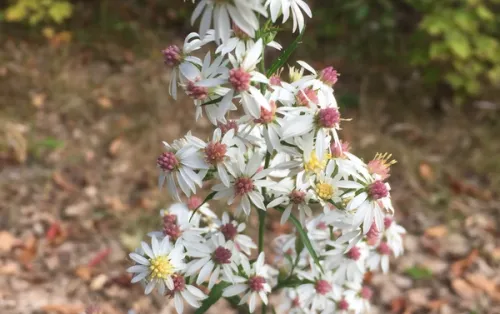Back to Glossary
Arrowleaf Aster
Symphyotrichum urophyllum
Arrowleaf Aster thrives in open woodlands, prairies, and along roadsides. Unlike most other Asters, this species distinguishes itself with its unique, arrow-shaped leaves that clasp its stems. Reaching heights of 1 to 3 feet, Arrowleaf Aster produces an abundance of small, white, daisy-like flowers with eye-catching yellow centers from late summer through fall. These attractive blooms are highly beneficial to bees, butterflies, and other pollinators preparing for winter, providing a critical late-season nectar source. Arrowleaf Aster is ideal for naturalized areas, butterfly gardens, and as part of mixed perennial borders, preferring well-drained soil and full sun to partial shade.
Details
Height12” - 36”
Spread10"
Bloom SeasonAugust – October
Soil Types
Loam
Sand
Gravel
Soil Moisture
Dry
Medium
Sun Exposure
Part Sun
Full Sun
Range Map
Available
Not available
Ecological Benefits
Maintenance Tips
- Moderately drought-tolerant once established; water regularly during extended dry periods.
- Deadhead spent flowers to encourage additional blooming or allow seeds to form for winter interest and wildlife food.
- Prefers well-drained, loamy soils but is adaptable to various soil conditions, including clay if drainage is adequate.
- Apply a layer of organic mulch to conserve moisture, suppress weeds, and provide insulation during colder months.
- Monitor for common pests and diseases like powdery mildew. Promote good air circulation and practice crop rotation in garden beds to prevent disease buildup.


